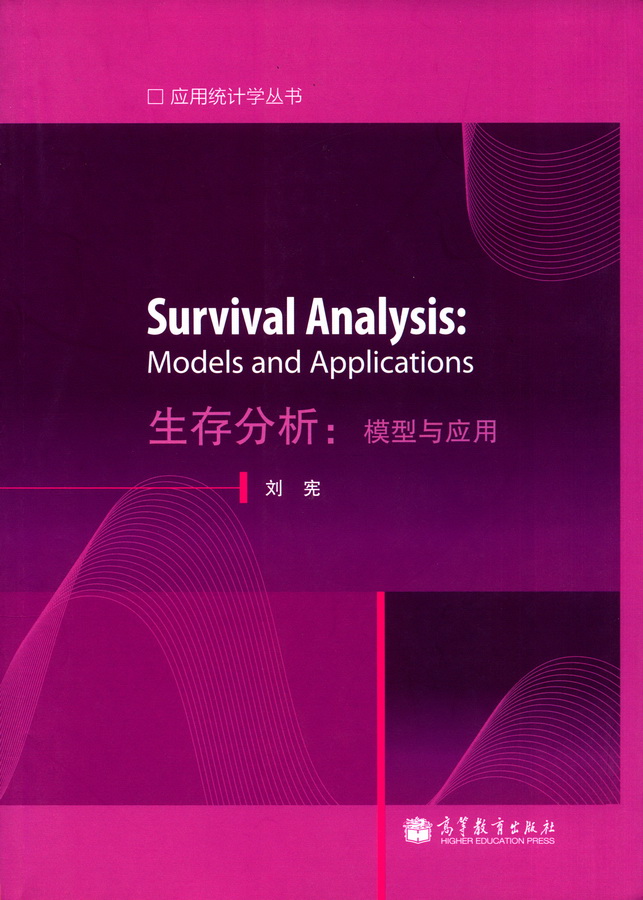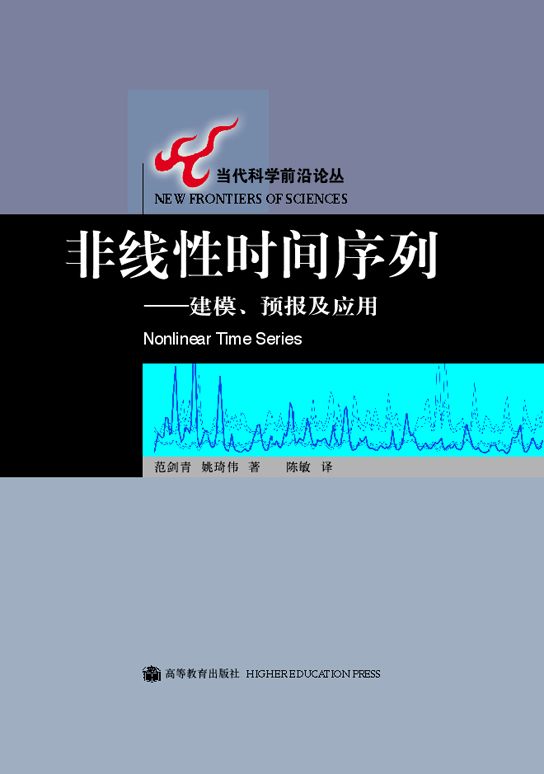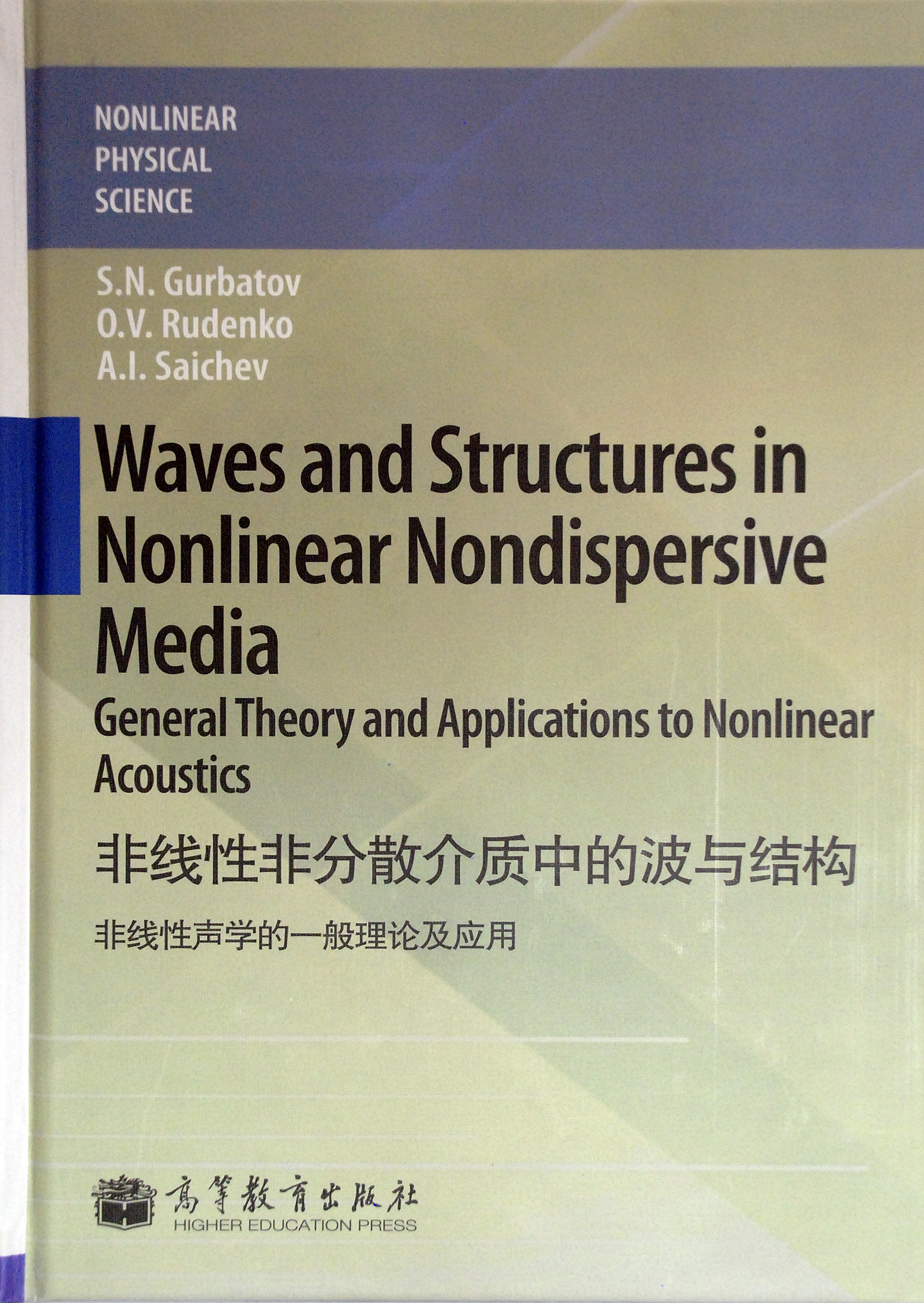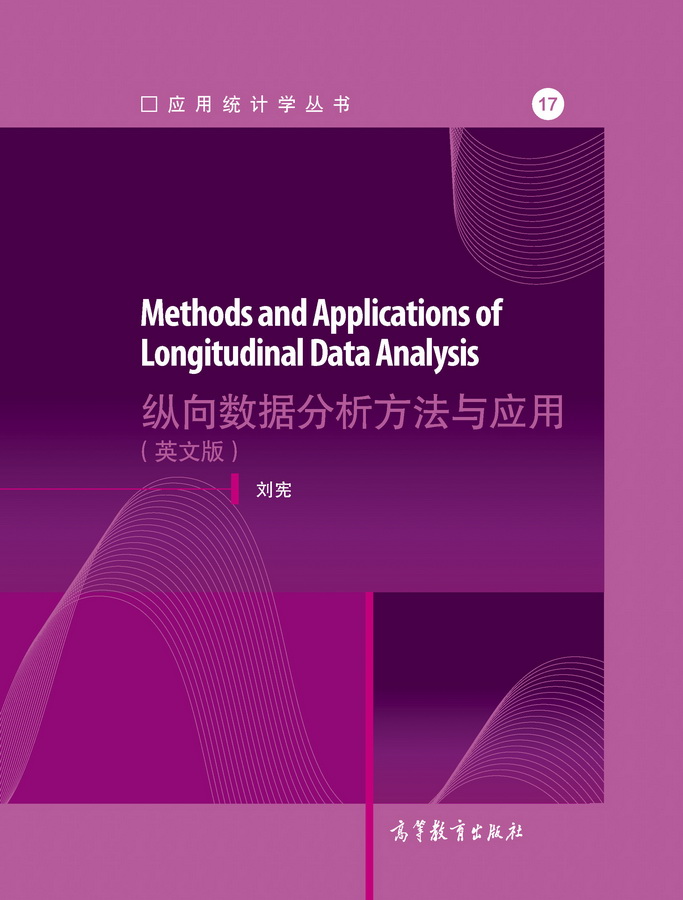生存分析:模型与应用 (英文版)
作者: 刘宪
出版时间:2012-07-27
出版社:高等教育出版社
- 高等教育出版社
- 9787040348262
- 1
- 242502
- 平装
- 16开
- 2012-07-27
- 740
- 446
《应用统计学丛书·生存分析:模型与应用 (英文版)》旨在系统地介绍生存分析的基本概念、理论设定和方法运用,重点在于通过SAS统计软件对实际数据进行分析,深入浅出地描述生存分析的各类模 型。书中涉及的统计方法包括Kaplan-Meirer估算法、各类参数回归模型、Cox等比发生率模型、多向发生率模型和重复发生率模型、结构性风险率 模型以及一些生存分析方面的专题研究方法。
《应用统计学丛书·生存分析:模型与应用 (英文版)》着重于各类生存分析模型的实际运用,而不拘泥于模型的纯理论推导,从而使对生存分析有兴趣的科研人员以及大学生、研究生从中受益。
前辅文
1 Introduction
1.1 What is survival analysis and how is it applied?
1.2 The history of survival analysis and its progress
1.3 General features of survival data structure
1.4 Censoring
1.4.1 Mechanisms of right censoring
1.4.2 Left censoring, interval censoring, and left truncation
1.5 Time scale and the origin of time
1.5.1 Observational studies
1.5.2 Biomedical studies
1.5.3 Health care utilization
1.6 Basic lifetime functions
1.6.1 Continuous lifetime functions
1.6.2 Discrete lifetime functions
1.6.3 Basic likelihood functions for right, left, and interval censoring
1.7 Organization of the book and data used for illustrations
1.8 Criteria for performing survival analysis
2 Descriptive approaches of survival analysis
2.1 The Kaplan-Meier (product-limit) and Nelson-Aalen estimators
2.1.1 Kaplan-Meier estimating procedures with or without censoring
2.1.2 Formulation of the Kaplan-Meier and Nelson-Aalen estimators
2.1.3 Variance and standard error of the survival function
2.1.4 Confidence intervals and confidence bands of the survival function
2.2 Life table methods
2.2.1 Life table indicators
2.2.2 Multistate life tables
2.2.3 Illustration: Life table estimates for older Americans
2.3 Group comparison of survival functions
2.3.1 Logrank test for survival curves of two groups
2.3.2 The Wilcoxon rank sum test on survival curves of two groups
2.3.3 Comparison of survival functions for more than two groups
2.3.4 Illustration: Comparison of survival curves between married and unmarried persons
2.4 Summary
3 Some popular survival distribution functions
3.1 Exponential survival distribution
3.2 The Weibull distribution and extreme value theory
3.2.1 Basic specifications of the Weibull distribution
3.2.2 The extreme value distribution
3.3 Gamma distribution
3.4 Lognormal distribution
3.5 Log-logistic distribution
3.6 Gompertz distribution and Gompertz-type hazard models
3.7 Hypergeometric distribution
3.8 Other distributions
3.9 Summary
4 Parametric regression models of survival analysis
4.1 General specifications and inferences of parametric regression models
4.1.1 Specifications of parametric regression models on the hazard function
4.1.2 Specifications of accelerated failure time regression models
4.1.3 Inferences of parametric regression models and likelihood functions
4.1.4 Procedures of maximization and hypothesis testing on ML estimates
4.2 Exponential regression models
4.2.1 Exponential regression model on the hazard function
4.2.2 Exponential accelerated failure time regression model
4.2.3 Illustration: Exponential regression model on marital status and survival among older Americans
4.3 Weibull regression models
4.3.1 Weibull hazard regression model
4.3.2 Weibull accelerated failure time regression model
4.3.3 Conversion of Weibull proportional hazard and AFT parameters
4.3.4 Illustration: A Weibull regression model on marital status and survival among older Americans
4.4 Log-logistic regression models
4.4.1 Specifications of the log-logistic AFT regression model
4.4.2 Retransformation of AFT parameters to untransformed log-logistic parameters
4.4.3 Illustration: The log-logistic regression model on marital status and survival among the oldest old Americans
4.5 Other parametric regression models
4.5.1 The lognormal regression model
4.5.2 Gamma distributed regression models
4.6 Parametric regression models with interval censoring
4.6.1 Inference of parametric regression models with interval censoring
4.6.2 Illustration: A parametric survival model with independent interval censoring
4.7 Summary
5 The Cox proportional hazard regression model and advances
5.1 The Cox semi-parametric hazard model
5.1.1 Basic specifications of the Cox proportional hazard model
5.1.2 Partial likelihood
5.1.3 Procedures of maximization and hypothesis testing on partial likelihood
5.2 Estimation of the Cox hazard model with tied survival times
5.2.1 The discrete-time logistic regression model
5.2.2 Approximate methods handling ties in the proportional hazard model
5.2.3 Illustration on tied survival data: Smoking cigarettes and the mortality of older Americans
5.3 Estimation of survival functions from the Cox proportional hazard model
5.3.1 The Kalbfleisch-Prentice method
5.3.2 The Breslow method
5.3.3 Illustration: Comparing survival curves for smokers and nonsmokers among older Americans
5.4 The hazard rate model with time-dependent covariates
5.4.1 Categorization of time-dependent covariates
5.4.2 The hazard rate model with time-dependent covariates
5.4.3 Illustration: A hazard model on time-dependent marital status and the mortality of older Americans
5.5 Stratified proportional hazard rate model
5.5.1 Specifications of the stratified hazard rate model
5.5.2 Illustration: Smoking cigarettes and the mortality of older Americans with stratification on three age groups
5.6 Left truncation, left censoring, and interval censoring
5.6.1 The Cox model with left truncation, left censoring, and interval censoring
5.6.2 Illustration: Analyzing left truncated survival data on smoking cigarettes and the mortality of unmarried older Americans
5.7 Qualitative factors and local tests
5.7.1 Qualitative factors and scaling approaches
5.7.2 Local tests
5.7.3 Illustration of local tests: Educational attainment and the mortality of older Americans
5.8 Summary
6 Counting processes and diagnostics of the Cox model
6.1 Counting processes and the martingale theory
6.1.1 Counting processes
6.1.2 The martingale theory
6.1.3 Stochastic integrated processes as martingale transforms
6.1.4 Martingale central limit theorems
6.1.5 Counting process formulation for the Cox model
6.2 Residuals of the Cox proportional hazard model
6.2.1 Cox-Snell residuals
6.2.2 Schoenfeld residuals
6.2.3 Martingale residuals
6.2.4 Score residuals
6.2.5 Deviance residuals
6.2.6 Illustration: Residual analysis on the Cox model of smoking cigarettes and the mortality of older Americans
6.3 Assessment of proportional hazards assumption
6.3.1 Checking proportionality by adding a time-dependent variable
6.3.2 The Andersen plots for checking proportionality
6.3.3 Checking proportionality with scaled Schoenfeld residuals
6.3.4 The Arjas plots
6.3.5 Checking proportionality with cumulative sums of martingale-based residuals
6.3.6 Illustration: Checking the proportionality assumption in the Cox model for the effect of age on the mortality of older Americans
6.4 Checking the functional form of a covariate
6.4.1 Checking model fit statistics for different link functions
6.4.2 Checking the functional form with cumulative sums of martingale-based residuals
6.4.3 Illustration: Checking the functional form of age in the Cox model on the mortality of older Americans
6.5 Identification of influential observations in the Cox model
6.5.1 The likelihood displacement statistic approximation
6.5.2 LMAX statistic for identification of influential observations
6.5.3 Illustration: Checking influential observations in the Cox model on the mortality of older Americans
6.6 Summary
7 Competing risks models and repeated events
7.1 Competing risks hazard rate models
7.1.1 Latent failure times of competing risks and model specifications
7.1.2 Competing risks models and the likelihood function without covariates
7.1.3 Inference for competing risks models with covariates
7.1.4 Competing risks model using the multinomial logit regression
7.1.5 Competing risks model with dependent failure types
7.1.6 Illustration of competing risks models: Smoking cigarettes and the mortality of older Americans from three causes of death
7.2 Repeated events
7.2.1 Andersen and Gill model (AG)
7.2.2 PWP total time and gap time models (PWP-CP and PWP-GT)
7.2.3 The WLW model and extensions
7.2.4 Proportional rate and mean functions of repeated events
7.2.5 Illustration: The effects of a medical treatment on repeated patient visits
7.3 Summary
8 Structural hazard rate regression models
8.1 Some thoughts about the structural hazard regression models
8.2 Structural hazard rate model with retransformation of random errors
8.2.1 Model specification
8.2.2 The estimation of the full model
8.2.3 The estimation of reduced-form equations
8.2.4 Decomposition of causal effects on hazard rates and survival functions
8.2.5 Illustration: The effects of veteran status on the mortality of older Americans and its pathways
8.3 Summary
9 Special topics
9.1 Informative censoring
9.1.1 Selection model
9.1.2 Sensitivity analysis models
9.1.3 Comments on current models handling informative censoring
9.2 Bivariate and multivariate survival functions
9.2.1 Inference of the bivariate survival model
9.2.2 Estimation of bivariate and multivariate survival models
9.2.3 Illustration of marginal models handling multivariate survival data
9.3 Frailty models
9.3.1 Hazard models with individual frailty
9.3.2 The correlated frailty model
9.3.3 Illustration of frailty models: The effect of veteran status on the mortality of older Americans revisited
9.4 Mortality crossovers and the maximum life span
9.4.1 Basic specifications
9.4.2 Relative acceleration of the hazard rate and timing of mortality crossing
9.4.3 Mathematical conditions for maximum life span and mortality crossover
9.5 Survival convergence and the preceding mortality crossover
9.5.1 Mathematical proofs for survival convergence and mortality crossovers
9.5.2 Simulations
9.5.3 Explanations for survival convergence and the preceding mortality crossover
9.6 Sample size required and power analysis
9.6.1 Calculation of sample size required
9.6.2 Illustration: Calculating sample size required
9.7 Summary
Appendix A The delta method
Appendix B Approximation of the variance-covariance matrix for the predicted probabilities from results of the multinomial logit model
Appendix C Simulated patient data on treatment of PTSD (n=255)
Appendix D SAS code for derivation of φ estimates in reduced-form equations
Appendix E The analytic result of k*(x)
References
Index










